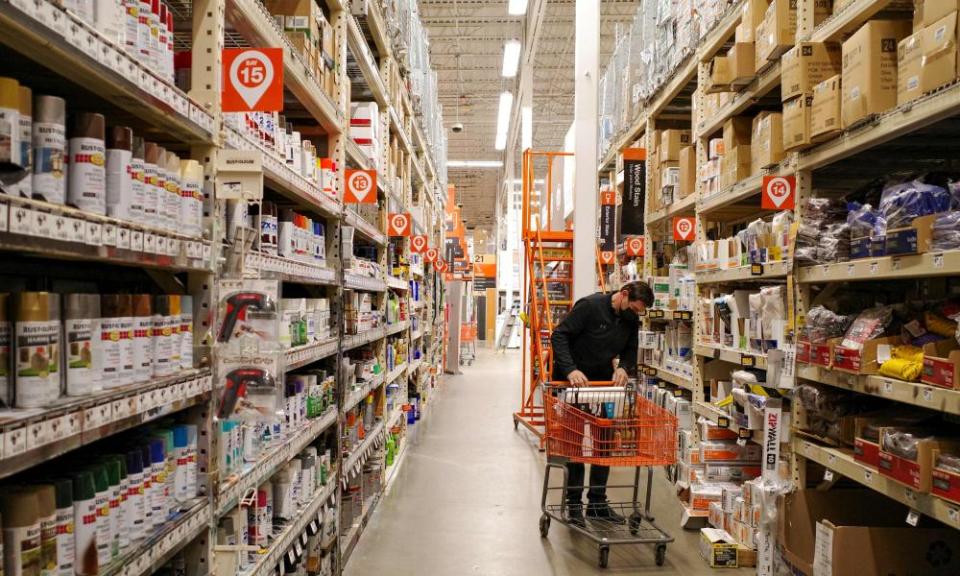US economy shrinks in second quarter, signaling unofficial start of recession

The US economy shrank again in the last three months, unofficially signaling the start of a recession.
The commerce department announced Thursday that gross domestic product (GDP) – a broad measure of the price of goods and services – decreased at an annualized rate of 0.9% in the second quarter after falling at an annualized rate of 1.6% in the first three months.
The bad news will be a major blow for the Biden administration as it prepares for a tough midterm election season. White House officials have tried to tamp down talk of a recession, arguing that many parts of the economy remain strong.
The growth rate stands in marked contrast to the robust 6.9% annual increase in GDP recorded in the final quarter of 2021 when the economy roared back from Covid shutdowns.
The fast pace of growth contributed to soaring inflation – now running at 40-year highs – and the Federal Reserve’s decision to sharply increase interest rates in order to bring down prices.
The changing economic environment was reflected in the GDP report. Consumer spending – the largest driver of the economy – slowed over the quarter but remained positive, rising 1% on an annual basis. Residential fixed investment, or home construction, dropped 14% on an annual basis and slowing business inventories, goods produced but not yet sold by businesses, dragged down the GDP number.
Two quarters of negative GDP growth are widely regarded as a signal that the economy has gone into recession. But the National Bureau of Economic Research (NBER) is the official arbiter of when recessions begin and end. While the GDP figures will play into the NBER’s final verdict, it also looks at a wider range of economic factors, including the jobs market, and is unlikely to give its decision soon.
“The 0.9% annualized fall in GDP in the second quarter is disappointing but doesn’t mean the economy is in recession,” said Andrew Hunter, senior US economist at Capital Economics. “That said, the details show that higher rates and surging inflation are weighing on underlying demand, and we expect only a muted rebound in economic growth over the second half of the year.”
In the meantime, pressure remains on the Biden administration. Surveys of consumer confidence are falling as recession fears grow and Joe Biden’s overall and economic approval poll numbers are at the lowest levels of his presidency.
In a statement, Biden said it was “no surprise that the economy is slowing down as the Federal Reserve acts to bring down inflation. But even as we face historic global challenges, we are on the right path and we will come through this transition stronger and more secure.”
Republicans countered that the report shows “Democrats’ reckless economic policies are destroying our economy”.
The latest GDP figures came a day after the Fed announced another three-quarter of a percentage point increase in its benchmark interest rates as it fights to tame inflation.
Prices rose at an annual rate of 9.1% in the year to June, driven up by soaring costs for fuel, food and shelter.
While parts of the US economy remain strong – most notably the jobs market – the Covid pandemic continues to play havoc with global supplies and the war in Ukraine has pushed up energy prices.
The confusing economic outlook has triggered sell-offs in stock markets around the world and led some economists to predict a recession is coming. Nearly 70% of leading academic economists polled by the Financial Times last month predicted the US economy will tip into a recession next year.
Fed chair Jerome Powell said on Wednesday that he did not believe the US was now in a recession. But he said the Fed was prepared to keep raising rates in order to bring prices back down and that it was inevitable that such a move would slow the economy and affect the job market. “Price stability is what makes the whole economy work,” said Powell.
